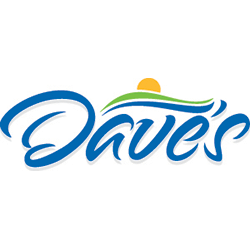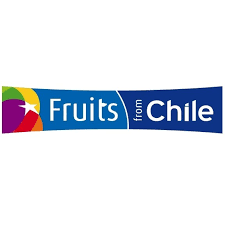GUADALAJARA, Mexico — Berry industry professionals from around the world convened for the two-day Aneberries conference and trade fair at the Guadalajara Expo, where education sessions addressed a host of hot topics from berry genetics and sustainability to climate challenges and trade volatility to strategic marketing and potential for global berry growth.
Among the berry pros was Kevin Hamilton, vice president of global marketing communications for the U.S. Highbush Blueberry Council (USBC). Hamilton joined the USBC two years ago, bringing an extensive marketing background that included helping to elevate the Avocados From Mexico (AFM) brand by producing the board’s first Super Bowl commercial. He’s also worked for CPG companies like Procter & Gamble and Coca-Cola.
Hamilton, who presented the keynote address, “Driving Growth — Strategies and Promotion Campaigns for the Blueberry Market in Mexico and Worldwide” at the Aneberries conference and trade fair on July 24, sat down with The Packer the day before his presentation to talk global berry marketing strategy, driving demand versus sales, the importance of Aneberries and more.
Give us an overview of the U.S. Highbush Blueberry Council. What’s the size and scope of the organization and what’s your global marketing mission for blueberries?
Hamilton: USHBC is a commodity board organization, and its purpose is to pool resources across the industry to focus on the side of the supply and demand curve that agriculture isn’t used to focusing on, as historically agriculture has been focused on supplies.
Our whole mission is to use all the tools we have at our disposal to grow demand, and I think it’s important to understand what demand really is. I think people confuse sales as demand. Demand is not sales, because you can generate and spark sales by lowering your price. Demand is when sales are growing up without lowering the price. Otherwise, all you’re doing is just moving up and down the same demand curve.
What I want to see is a real increase of dollars plus unit sales increase, because in reality you can get those dollar sales on lower volume.
We’re using a lot of different tools to get there. We’re very focused on data; building out a data capability that the industry can rely on, not only supply-side data, but demand-side sales data — retail data — as well as trying to introduce new marketing techniques to the industry that it hasn’t either leveraged or known to leverage historically. That’s USHBC in a nutshell.
We also have a parent organization called North America Blueberry Council, and that is a member-driven organization, so it doesn’t have oversight from USDA, as USHBC does. NABC is focused on supply-side concerns for the farmers — a lot of policy-based concerns. Whereas USHBC doesn’t do any advocacy in policy activity. We’re solely focused on driving demand in markets — retail, food ingredient, foodservice, using research in the health space to drive demand, shopper marketing and things like that.
What drew you and the USHBC to the Aneberries conference and trade fair?
We’re looking to open up as many markets as we can. Given the production curve and the expectation that blueberries are expected to continue to grow by leaps and bounds, if there’s one message that I’m trying to deliver to this audience it is that while it’s understandable that, historically, industry participants have been focused on supply because it’s been a limited, specialty product; we need to focus on driving demand.
All this worldwide production didn’t exist as little as 15 years ago. It didn’t exist in critical mass even 10 years ago. So, it’s a different kind of supply paradigm now than it was before.
And if we don’t shift the demand curve commensurate with the supply curve, then there’s only one way out, and it’s lower prices. And from there, there’s only one way out, which is you start having participants exit the industry because of those low prices.
We need to start focusing as an industry on that demand side because it’s existential to the industry from a profitability perspective. And we’re the only organization worldwide that is doing this for the industry, so we’re very focused and dedicated in that service to our farmer community.
What is USHBC’s global reach in terms of marketing?
We spend dollars in 10 different countries, Mexico being the newest to that list. We are in the U.S., Canada, Mexico, Japan, South Korea, India, Malaysia, the Philippines, Vietnam and China.
AFM’s marketing success is something many produce brands aspire to. How are you applying the experience and knowledge you gained there as well as your CPG experience to the U.S. Highbush Blueberry Council and the global promotion of blueberries?
CPG does marketing very well and the question is, why do they do it well? And there are several reasons for that. Manufacturers need to spark interest in the product. They need to spark awareness in it. They need to keep that product top of mind and drive it home through shopper marketing.
Ivory soap, which is Procter & Gamble, and Coca-Cola have understood since the 1800s that you have to have an awesome product, but you also have to generate sales for it — you have to generate interest. The game in marketing is standing out. It’s getting attention and being different. If you’re the same, you don’t get noticed. If you don’t get noticed, you’re not going to get any mind share and no mind share equals no sales.
So, the idea was, let’s simply be different. Let’s not do what everyone else does in this space. Be data-driven in your marketing approach and measure everything that you’re doing.
The fresh produce industry is increasingly competitive — and on a global scale. How are blueberries navigating that competition?
If we’re going to continue to increase supply, we have to find the berries a home — that’s the economics of it. And so, that’s going to be the challenge, because certainly in the two years I’ve been in this industry, I’ve been to various parts of the world seeing and hearing about increased plantings, so we need to find people to eat more berries and hopefully do it in a profitable way.
What is the greatest challenge U.S. blueberry suppliers/growers currently face and where do you see the greatest opportunities?
The biggest challenge is that berries have to generate the level of global community that the avocado space has. Avocados have really gotten behind the notion that there’s a collectivism to growing the entire pot in each region — Mexico, California, Peru, Chile, Columbia — they can fight over the size of the pie, but wouldn’t you want to fight over a larger pie versus one that’s not growing?
No one entity in the blueberry space is big enough to invest large amounts of money over a long term to grow the entire pie. So, the level of unity that we need collectively is to get behind an entity like USHBC that understands what it takes to win in this marketing demand-driving space and grow it from there. If we can do that, the road is very clear.
That to me, is the biggest challenge. As far as differentiating blueberries, specifically with consumers, we are known for health. And so, the opportunity is growing beyond that. It’s building the value proposition for the consumer beyond just that one thing.
If we do that, we build out the notion of increased occasions for consumption. We are a product that’s heavily consumed pre-noon and then afternoon. We are very much used as a topping — as an ingredient — but not as a healthy snack in the U.S. It’s a little bit different in some other countries, but in the U.S., that’s a point we’re going to be focusing on with our new campaign that drops today.
We’re really trying to win the space of healthy, better-for-you snacking. With all the blueberry volume coming in, we need people to eat more often, and then for each occasion, eat higher volumes.
The berry category continues to boom. Circana reports $12.5 billion in sales for the 52 weeks ending June 15, 2025. Where do blueberries fit into the picture and how will you continue to drive demand and increase sales?
It’s a collective effort. The data has been very clear. Consumers are very clear, and I’m taking price out of it, because I’ve done this enough to know that when you do consumer surveys and you ask why don’t you purchase a product, price always comes up. And the truth is, you could ask that question on an item that’s free, and they’ll still say price is a problem.
The fact is, we don’t have a price problem in this category. What we have is a value proposition problem. Consumers don’t believe the value they’re getting matches up to the price they pay. We don’t need to lower the price. What we need to do is increase the value, and that is how we’re going to continue to drive profitable sales in this industry.
We need to drive the value equation of the understanding of all the things that the consumer gets with this product that are difficult to get in other ways, not only functionally, but emotionally as well. It’s the reason why we pay $10,000 for a Chanel bag, when we could get a Michael Kors bag for $250. So, we drive emotion with function, and that drives a higher value equation, which therefore drives a higher willingness to pay — a higher willingness to participate in category.

















